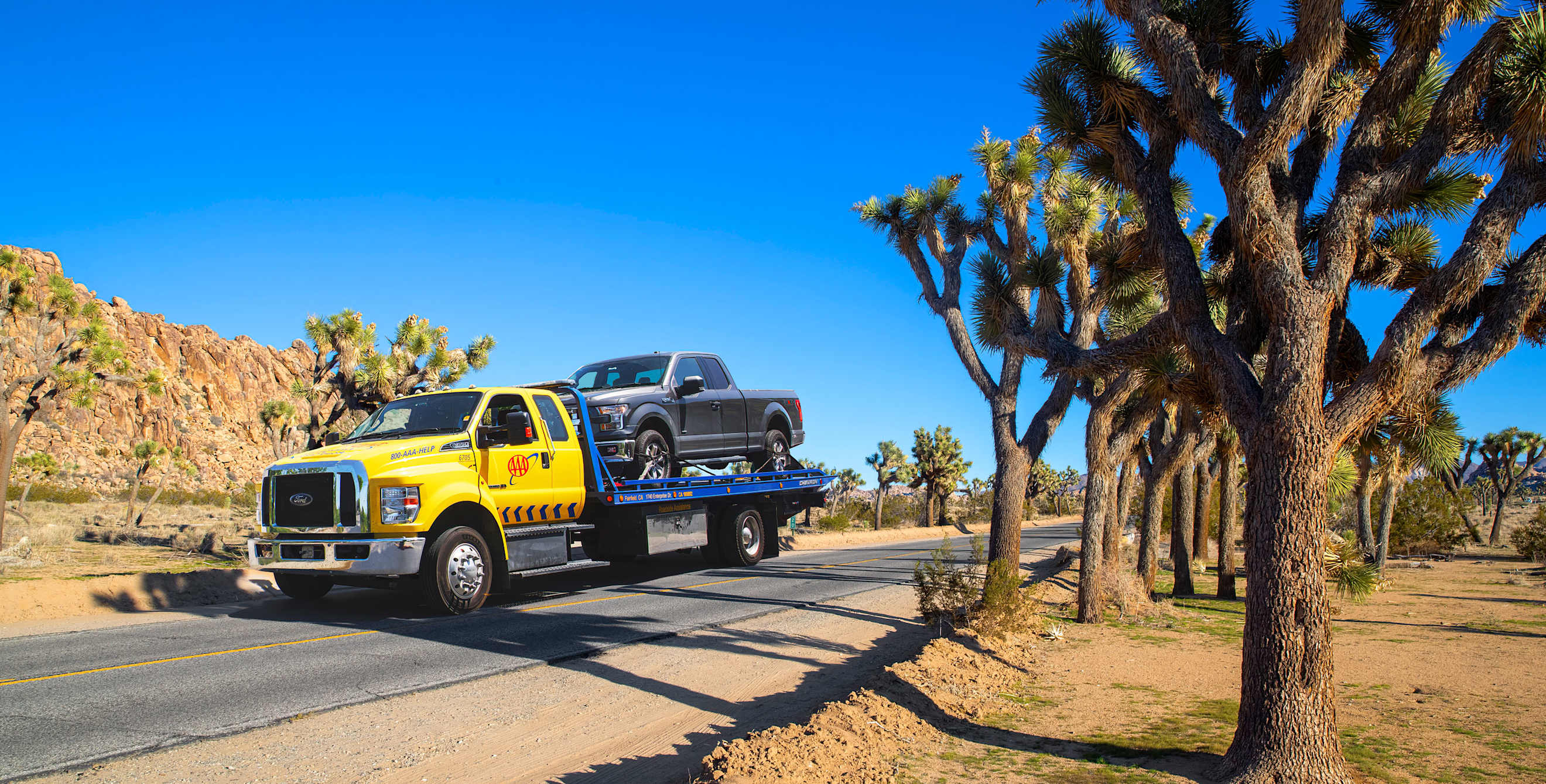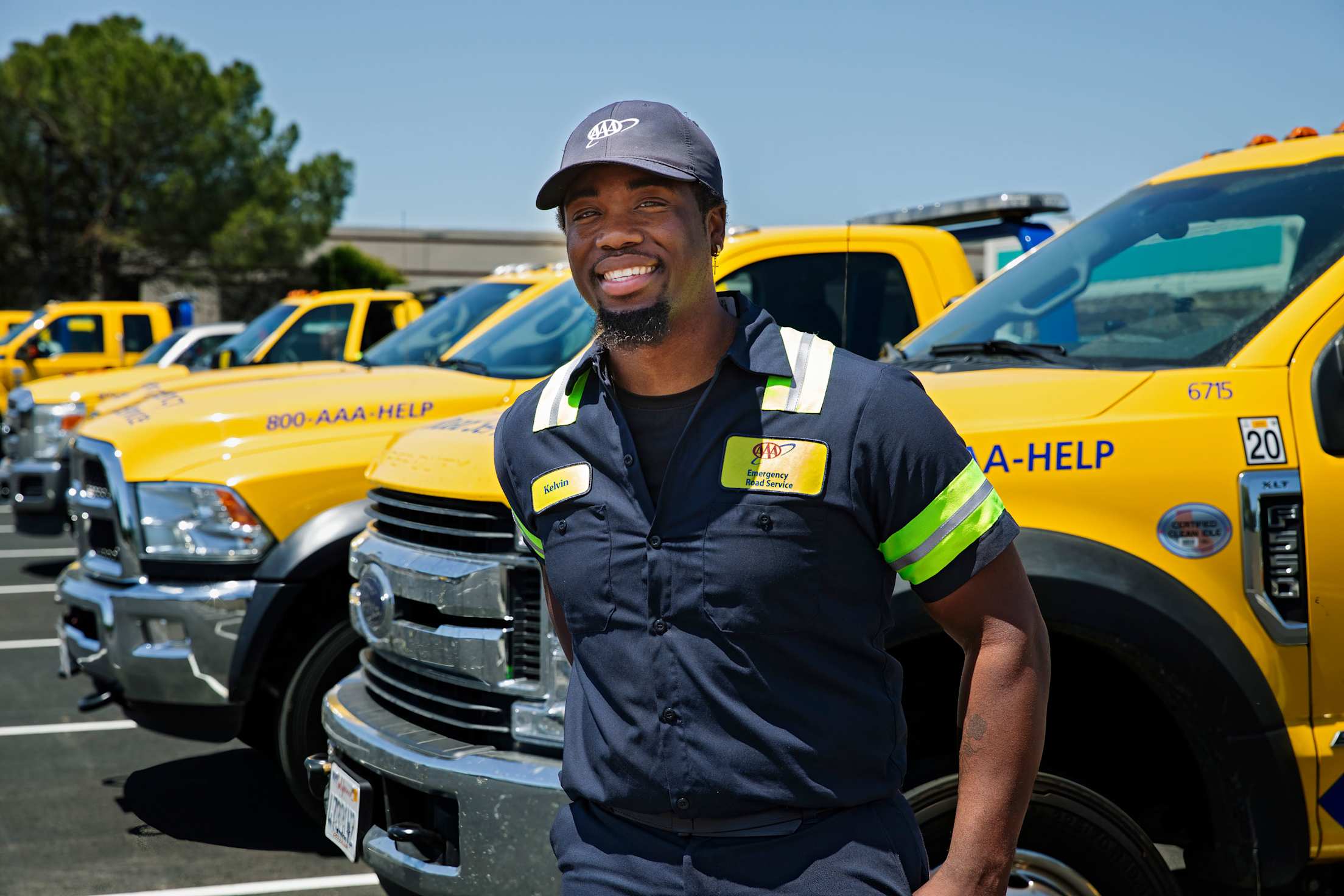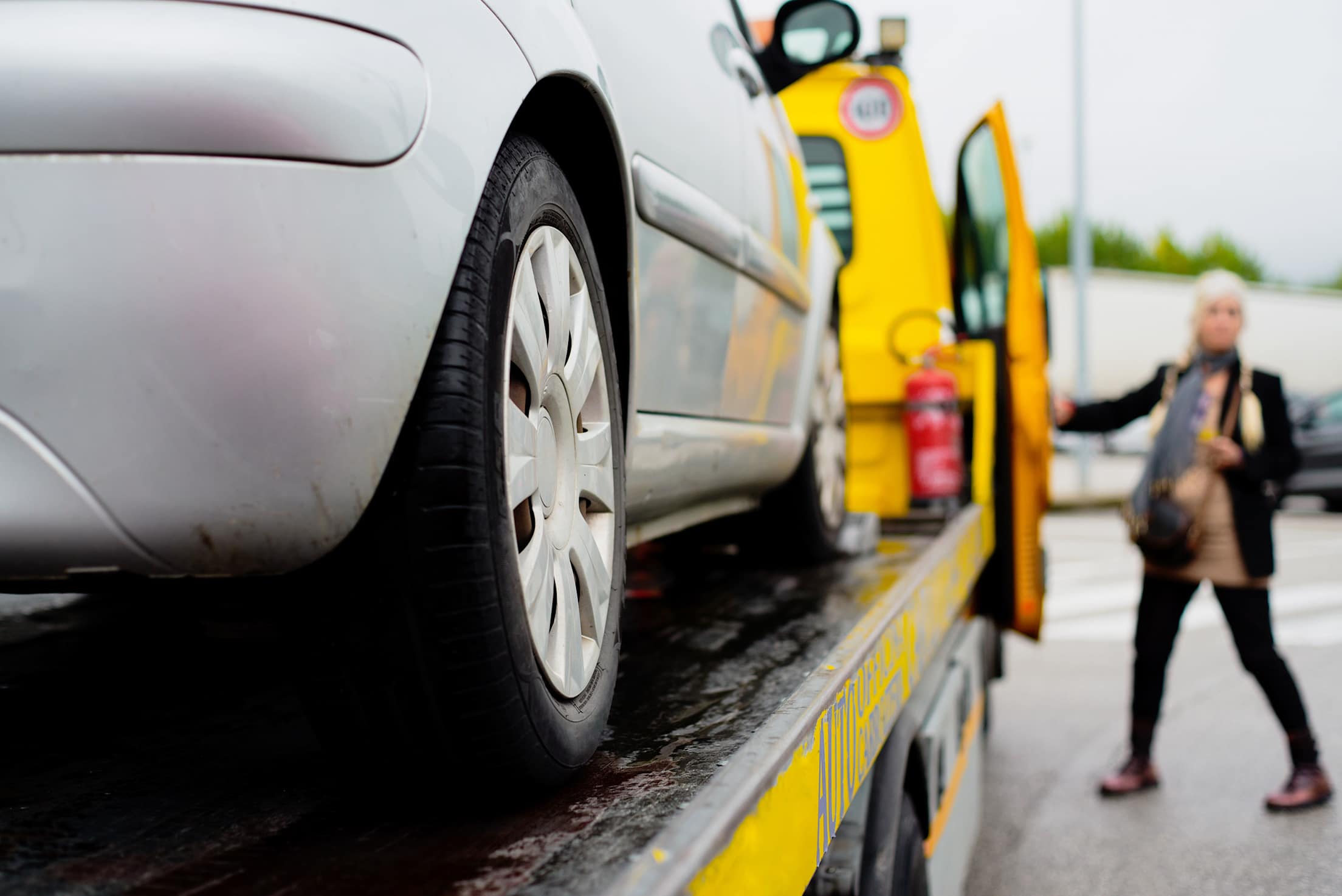
How to Safely Pass a Stopped Tow Truck
Remember these four words: slow down, move over.

As an ex-Marine, Patrick O’Malley recognizes dangerous situations when he sees them. And he sees them almost daily in his current line of work. O’Malley, 39, is a tow truck operator for AAA, based in the Sacramento, California, region.
“This is a busy area with a lot of traffic traveling very fast,” says O’Malley. “When we pull over to help someone, there’s a good chance we’re putting our own lives on the line.” Statistics bear that out across the United States. Every year in this country, an average of 24 emergency responders, including tow providers, are struck and killed while working roadside, according to data from the AAA Foundation for Traffic Safety. That’s a death nearly every other week.
Since 2007, AAA has worked with other traffic-safety advocates to raise public awareness of these hazards while pushing for legislation aimed at reducing them. Those efforts have been instrumental in passing “Move Over” laws in all 50 states. While the fine print in the laws differ by state, the basic requirements are consistent: When approaching emergency medical crews, tow truck operators, police officers, or firefighters working on the side of the road, motorists should change lanes and slow down. In many states, Move Over laws cover encounters with other vehicles as well, including utility and sanitation fleets.
Despite the prevalence of these laws—and the common sense that underpins them—many motorists remain unaware of them. A survey by the National Highway Traffic Safety Administration found that 71 percent of Americans had no idea that drivers are required to switch lanes and reduce their speed to protect roadside workers.
Those survey results square with O’Malley’s experience. “A lot of motorists do not seem to be paying close attention,” he says. Working as a tow truck operator, O’Malley notes, has made him more conscientious when he’s behind the wheel of his own car. Many of his colleagues had the same experience, so AAA asked O’Malley and other tow truck drivers to share tips to keep roadside workers safe.

Aim high.
Everything you need to know about driving you didn’t learn in kindergarten. But you probably covered it in driver’s education, including the importance of “aiming high.” That refers to focusing your attention on the entire road, not just what’s immediately in front you. “If you aim high, you’re looking farther ahead, so you’re going to see us sooner,” says Darrius Stennis, a AAA tow truck driver in Phoenix, Arizona. “It might sound obvious, but it really helps us out a lot.”
Avoid distractions.
Cell phones. Radios. Kids in the back seat. “In this world today, we have so many things fighting for our attention,” O’Malley says. “I get it. It’s a challenge. At the same time, it’s also someone’s life and our ability to do our job.” Stay focused on the road, he says. Everything else can wait.
Exercise patience.
When a tow truck is blocking a lane or pulling into traffic, it’s tempting to speed up to get past the obstruction. Take a deep breath, please, says Pearl Martinez, a tow truck driver in the Tahoe, California, area. “A lot of times, the steering wheel in the car might be locked, or [there’s] some other situation that is making our job more difficult,” Martinez says. “Give us a minute. We’re working as quickly as we can.” The same applies when a tow truck has its blinker on as it is attempting to move into the flow of traffic. They aren’t sports cars. “It can take us a little longer to get going. We just might need a little extra time,” Martinez adds.

Be compassionate.
Driving can be frustrating and impersonal. When you’re isolated in your own car, O’Malley points out, it can be easy to forget that other motorists are people, too, as are the responders assisting them. “That person with the flat tire could be you someday,” O’Malley says. “Keep in mind that we’re all in this together, and that some of us are putting ourselves at risk to try to help others.”
Move toward space.
Not all breakdowns happen on the shoulder. Some occur in the center of the roadway, with traffic whizzing by on either side. In Sacramento, where O’Malley works, some highways have seven or eight lanes, leaving motorists to make a decision: Which side to favor? Situations vary, O’Malley agrees, but in every instance, tow truck drivers try to position their trucks and orange cones in a way that shunts traffic in the safest direction possible. Usually, that’s the side with the most room. “It really depends on where the breakdown is,” he says. “If it’s closer to the left side, move to the right. If it’s closer to the right side, move to the left. You’re looking for the side with the greater amount of space and maneuverability.”
Learn more about the latest statistics around Slow Down, Move Over.